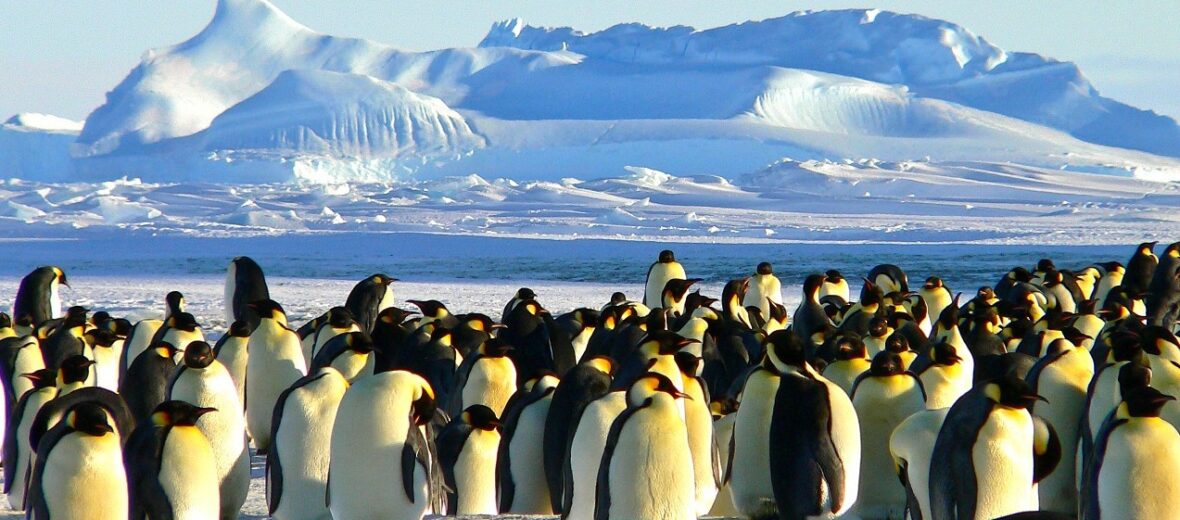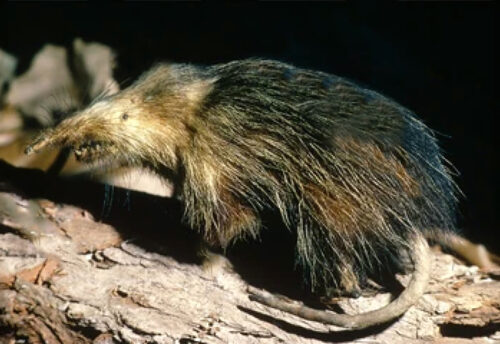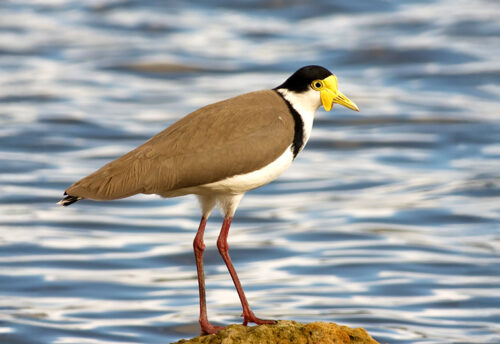
One of the few creatures able to withstand and thrive in the brutal cold of Antarctica, the emperor penguin is a critter to behold. They are the largest of all the known penguin species. From the moment of their birth, these giant penguins spend their entire lives around the frigid Antarctic ice. These giants are only dwarfed by the long extinct Palaeeudyptes klekowskii (colossus penguin), which lived around 37 million years ago and grew to a whopping 6 feet tall! Even though all 18 species of penguins are protected from hunting and collection, unless a special collection permit is acquired, they are still listed as Near Threatened by the IUCN. There are currently an estimated 595,000 emperors in the wild.
First the Stats…
Scientific name: Aptenodytes forsteri
Weight: Up to 99 lbs.
Length: Up to 3.8 feet
Wingspan: Up to 30 inches
Lifespan: Up to 30 years
Now on to the Facts!
1.) The temperatures in the Antarctic, where they call their home sweet home, can drop as low as -140°F!
2.) Their colonies can contain up to 10,000+ birds. On land, a large grouping of penguins is called a penguinery, rookery, or a waddle.
3.) When swimming at sea, large groups of penguins are call a raft.
4.) Emperors walk “waddle” slowly and are unable to hop. They also toboggan across the ice for a faster method of travel, since their walking speed is only 1.7 mph.
5.) During the blistering Antarctic winds, these penguins will form large huddles with the adult penguins on the outside of the rookery and the youngest on the inside. Every so often, the outer wall of penguins will rotate inward and switch places with others to warm up.
But wait, there’s more on the emperor penguin!
6.) In 2012, British scientists used satellite technology to locate emperor penguin colonies from the poop stains left on the ice at various breeding locations. They were able to locate 54 colonies.
7.) Before breeding season begins, both parents spend January – March at sea feeding and fattening up, as once the egg is laid, the male will be unable to eat anything for weeks.
Did you know…?
An emperor can dive up to 1,700 feet deep and hold their breath for up to 20 minutes!
8.) In April, they begin their nearly 100 mile march across the cold, icy terrain to the breeding grounds.
9.) After mating, the female will lay a single egg, pass it off to her partner, then leave to feed at sea for up to 9 weeks. When she returns she will have stored enough food for her chick. She will then take over parenting duties, relieving the male to go out to sea and finally eat.
10.) While the female is gone feeding, the male balances the egg on his feet and covers the egg with a special brood pouch (a fold of blubber and feathers) to keep the egg from freezing.
But wait, there’s more on the emperor penguin!
11.) Emperor penguins feed on fish, krill, and squid.
12.) These penguins eat up to 6.5 lbs. of food a day and are capable of eating twice that much!
13.) From breeding time till mom returns from her feeding journey, the male will not eat. This causes him to lose up to half of his body weight!
14.) They are hunted by orcas and leopard seals, in the water. On land, the chicks are preyed on by giant petrels, and skuas.
15.) Penguins actually mate for several seasons and then move on to find a new partner. This helps to ensure a solid genetic pool. So no, they aren’t monogamous (mate for life).
Now a Short Emperor Penguin Video!
Also, check out the Critter Science YouTube channel. Videos added frequently!
Want to suggest a critter for me to write about? Let me know here.



